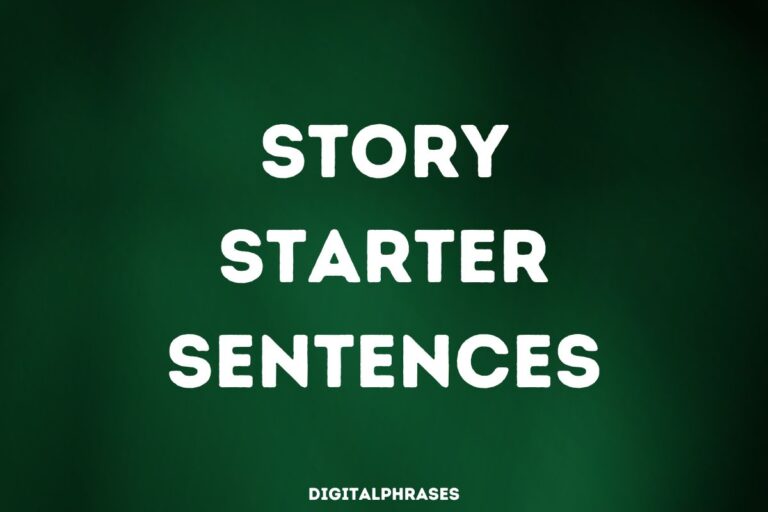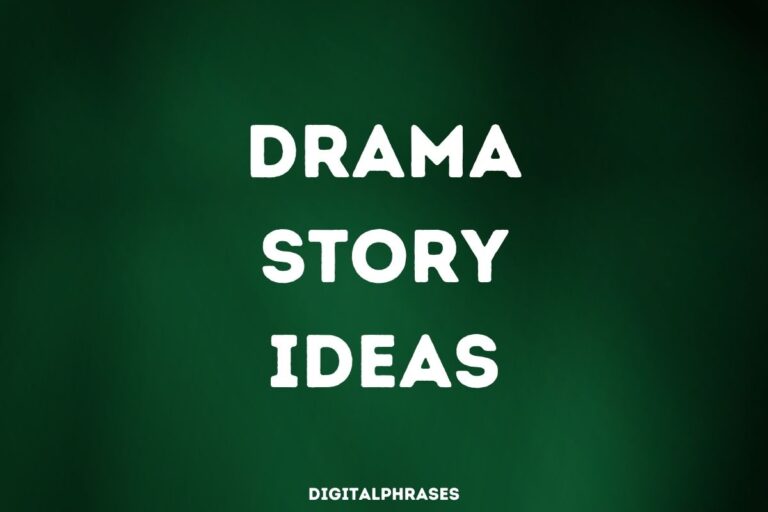30 Best 3-Minute Short Film Ideas
Short attention spans got you down?
Don’t worry, you can still enjoy awesome stories!
3-minute short films are like movie magic in a blink. Creators gotta pack a punch in just 180 seconds, but that makes them extra cool.
Forget endless scrolling, these tiny gems prove great stories don’t need hours. It’s all about what you do with the time you have, not how much.
Get ready, because we’re about to show you how to make crazy-good short films in just 3 minutes.
Let’s make every second count!
3 Minute Short Film Ideas
Lost & Found Memories: An elderly woman frequently visits a park bench, talking to someone unseen. People think she’s just lost her mind. Towards the end, a young girl approaches, places a photo on the bench, and says, “This was my mom’s favorite place, too.” We realize the elderly woman is visiting the spot she used to spend time with her deceased daughter.
Crossroads Café: At a small café, different patrons come in and out, each leaving a note in a jar labeled “Advice.” A man in his mid-thirties, obviously troubled, hesitates but then reads some notes: messages about love, life, and hope. By the end, he writes his own note: “Tomorrow is another chance” and leaves with a hopeful smile.
Echoing Melodies: A street musician plays his violin, but no one stops to listen. A young deaf girl approaches and places her hand on the instrument, feeling its vibrations. She dances, capturing the attention of passersby. Her joy reveals that music isn’t just heard, but also felt.
The Painter’s Vision: An artist stands in front of a blank canvas, frustrated. He walks around town, seeing only grayness. He stumbles upon a blind man who describes the world in vivid detail, using touch and sounds. Inspired, the artist paints this vibrant perspective, realizing that vision is more than just sight.
Reverse Aging: We watch a woman in her 80s, living alone, appearing to age backward as the film progresses. As she becomes younger, the film captures the moments and choices that defined her. By the end, she’s a young girl, and we see the most critical moment: her decision to embrace every moment of life.
Silent Confessions: At a bustling train station, people pass by a booth labeled “Confess Here.” Curious, some step inside to find no priest, just a mirror. As they face their reflection, they silently confront their regrets and hopes, leaving the booth with a weight off their shoulders. The film emphasizes that sometimes, self-reflection is the best absolution.
The Last Bookstore: In a future where books are obsolete, a girl discovers a hidden, dusty bookstore. She’s entranced by the magic of tangible stories. As she leaves, she’s gifted a book. She starts a movement, setting up reading corners around the city, showing that stories bind us together, regardless of the medium.
Hourglass Times: A man finds an hourglass in his attic, with a note: “Time spent loving is time gained.” Curious, he flips it. Every moment he spends showing kindness and love, the sand rises instead of falls. The film demonstrates that the time we give to love and compassion is the only time truly added to our lives.
Message in the Metro: Every day, a man travels the metro and finds cryptic, handwritten messages on the back of seats: “Find joy in rain” or “Listen more than you speak.” Intrigued, he starts following these clues, leading him to meaningful experiences and connections. The twist: an elderly gentleman was leaving these, trying to pass on the wisdom of a life well-lived, emphasizing that guidance often comes from unexpected places.
Behind the Door: A teenager finds an old door in her grandmother’s attic that doesn’t seem to lead anywhere. Curiously, when opened, it reveals scenes from the grandma’s past. Each time it’s opened, a different memory unfolds, teaching the teenager about resilience, love, and loss. The main theme becomes: Every door in life has a story.
The Unseen Helper: In a busy city, small acts of kindness mysteriously occur: a scarf for a homeless man, a meal for a stray cat, coins in an expired meter. The city buzzes about this unseen helper. It’s revealed to be a shy boy with a big heart, showing that sometimes the quietest people have the loudest actions.
Whispers of the Forest: A distraught writer retreats to a forest cabin, struggling with writer’s block. The forest starts “whispering” tales of old, stories of nature, and the harmony of life. Renewed, he writes these tales, highlighting that inspiration is all around, and nature is the best storyteller.
Mismatched Shoes: A woman goes about her day with two different shoes, receiving amused glances and chuckles. Flashbacks reveal her chaotic morning and her child’s insistence on her wearing the mismatched pair. The ending reveals it’s the anniversary of her other child’s passing, who always wore mismatched shoes. The story underlines that there’s always more behind someone’s story than we see.
Parallel Moments: Two strangers, in parallel frames, live remarkably symmetrical lives but have never met. Their routines, likes, and dislikes are uncannily similar. One day, a deviation occurs in one frame, leading them to cross paths. The film captures the serendipity of life and how our paths are intertwined in mysterious ways.
Lost in Translation: A mute street artist sketches passerby’s deepest desires, not their physical appearance. A tourist, unable to speak the local language, sits for a drawing. To her surprise, the sketch shows her reunited with her estranged sister. They both tear up, understanding each other perfectly, showcasing that communication transcends language.
Shadows of the Past: An old theater set to be demolished seems to come alive at night. Shadows of past performances, laughter, tears, and applause fill the air. A former actress, now aged, sneaks in for one last look and is transported back in time for one final bow. The film reinforces that places have souls shaped by the memories they’ve hosted.
Echoed Footsteps: In a quiet town, footsteps echo without an apparent source. These footsteps lead people to places they need to be: a forgotten appointment, a chance encounter, or even to find a lost item. It’s revealed that the footsteps are from the town’s founder, whose spirit still looks after his community, emphasizing that the legacy we leave can continue to guide future generations.
Recipe of Memories: Every week at a local bakery, a mysterious recipe appears with no source. When baked, the smell evokes deep, personal memories for those who taste it. A young baker, new to town, traces the origin and discovers the recipes are from a grandmother she never met. It proves that family ties can manifest in the most magical ways.
Dance of the Umbrellas: On rainy days in a city square, when people open their umbrellas, they’re compelled to dance. The phenomenon becomes viral. An old man reveals the square was where he and his late wife used to dance in the rain, and he spread her ashes there. It’s a touching reminder that joy can be contagious, even from the past.
The Silent Orchestra: A group of musicians gather in an abandoned hall, playing without any sound. People walk in, hearing the music in their minds, each person hearing a different tune based on their emotions. The film conveys that music is an emotion, not just sound.
Mirror of Futures: At a local fair, a mirror tent attracts visitors. But one mirror doesn’t reflect the present – it shows possible futures based on decisions made. A teen girl sees herself with different career paths, love interests, and life journeys, realizing that every choice crafts a new destiny.
Tapestry of Dreams: An old weaver creates tapestries that capture not scenes, but dreams. Customers are amazed to see their unspoken dreams woven into fabric. When a disillusioned man claims he has no dreams left, the weaver crafts a blank tapestry, which over time fills with colors as the man rediscovers his passions, highlighting that it’s never too late to dream anew.
Library of Forgotten Stories: Deep in a library, there’s a section where books write themselves. These are the tales of people’s forgotten memories and lost moments. A librarian discovers her mother’s story there, understanding her sacrifices and unseen love for the family. The narrative drives home the idea that there are countless untold stories in every heart.
The Compass Clock: In an antique shop, a clock doesn’t show time but points to people one needs to meet. A lonely woman buys it, and it leads her to various strangers. Each interaction enriches her life in unforeseen ways. By the end, the compass points back to her, showing that the most crucial connection is knowing oneself.
Garden of Forgotten Wishes: In a secluded garden, plants bloom in response to forgotten wishes. When a person touches a bloom, they recall a lost desire or hope. A grieving widow visits and is drawn to a radiant flower, remembering her lost wish to dance one more time with her husband. As she dances alone, a gentle wind joins her, symbolizing her husband’s spirit, emphasizing that lost wishes can still find a way to touch our hearts.
The Street of Past Lives: On a hidden street, every door leads to scenes from past lives. A curious traveler stumbles upon it, witnessing lives where he was a soldier, an artist, a healer, and more. Each life leaves him with a lesson, making him realize that our souls carry wisdom from countless experiences.
Whistle of the Wind: A man hiking in the mountains hears a distinct whistle that seems to tell tales of old. Intrigued, he follows it and is led to relics and symbols of bygone eras. The whistle, it turns out, is the mountain’s way of recounting its history, reminding him and us that nature has witnessed countless stories.
Letters from the Sky: Every morning, a woman finds mysterious letters on her doorstep that detail the dreams of people from around the world. As she reads them, she sketches their dreams, eventually hosting an exhibition. The twist? The letters are from her younger self, making her realize that dreams are timeless and can bridge different stages of life.
The Memory Quilt: An elderly woman stitches a quilt that showcases glimpses of her life’s most poignant moments. With each patch, we see short flashbacks: love, loss, joy, and pain. When she passes away, the quilt becomes a source of solace for her family, serving as a reminder that life is made of both tears and smiles.
The River’s Echo: In a serene village, a river is believed to echo back moments from the past when a stone is cast with a thought. A young girl throws a stone, yearning to know her late parents. The river’s surface ripples, showing her snippets of their life, love, and her birth, teaching her and the viewers that nature often guards the most intimate memories of humanity.






